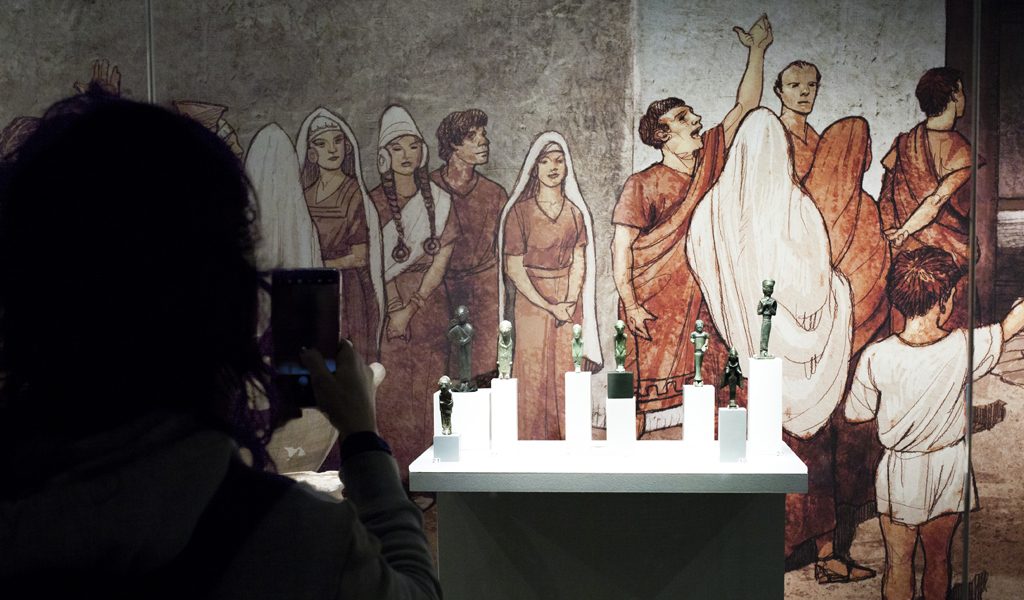How institutions use direct Facebook feeds to their advantage
Technology is playing an essential role in how we connect with the world around us. It is not surprising, then, that many museums have taken advantage of it to stay in touch with their visitors and expand their reach during the last period.
Among the most effective tools for achieving these goals is undoubtedly the live streaming. A medium that has made it possible to spread the exhibits, activities, and behind-the-scenes on the screens of its audience, increasing engagement.
Facebook Live has been the most widely used platform to carry out these kinds of live broadcasts, being connected to an existing “fan” base.
Taking a cue from an article by Jim Richardson, founder of MuseumNext, one of the people in the cultural world I follow most closely, here is a list of best practices on using Facebook Live for your institution.
Coming together to collaborate
In 2017, five international museums joined forces to virtually unite Vincent Van Gogh’s sunflower paintings.

La National Gallery in London, the Van Gogh Museum of Amsterdam, the Philadelphia Museum of Art, the Neue Pinakothek of Munich and the Seiji Togo Memorial Sompo Japan Nipponkoa Museum of Art in Tokyo have taken advantage of Facebook Live to share their version of Sunflowers with the curators and/or directors of these museums by talking directly to the public on Zuckerberg’s social networking site.
Each museum described what makes its work unique and provided a fresh and sometimes unfamiliar view of the artist and his work.
These live feeds from the museums were then combined with a virtual reality experience that showed viewers all five “Sunflowers” in one room.
The broadcast reached millions of viewers through individual museum pages, and the footage was later made available on YouTube when streaming was completed. More importantly working together, these five institutions promoted each other to their audiences, gaining “visitors” for each other (of the joint venture and how to exploit it I discuss it extensively in my book Every Damn Museum).

Making collections more accessible
After providing free weekly tours for deaf art lovers at the Metropolitan Museum of Art since 2001, the museum turned to Facebook Live to offer a tour of the“Rodin at the Met” exhibition in late 2017 using American Sign Language (ASL).
The tour by Emmanuel von Schack, an art historian and lecturer, has been viewed more than 54,000 times and shared by 700 people on Facebook.
Emmanuel himself later reported his enthusiasm for the project to Hyperallergic for two reasons:
- the ability to watch the tour live and later around the world;
- increasing the visibility and awareness of American Sign Language, Deaf identity, and the Met’s own commitment to accessibility and inclusion.

After the success of this experiment, the museum further broadcast the ASL tours.
“Mountains of Diamonds. Travel and Nostalgia in Korean Art” was viewed by 18000 people while the ASL live program on Umberto Boccioni’s “Unique Forms of Continuity in Space” reached 17000 views in less than 24 hours.
Sharing live events
I Royal Museums Greenwich used Facebook Live to broadcast coverage of thelunar eclipse from the Royal Observatory in July 2018.

The live broadcast provided an opportunity to share their staff’s experience and to chat with guests about the lunar eclipse.
The museums also shared live footage of the moon through their AMAT telescope, which was able to see the incredible details as they followed it across the sky (80000 people watched the live broadcast!).
Telling the story of the empty museum
The National Etruscan Museum of Villa Giulia, already used Facebook Live but took even more advantage of this tool when it was forced to close its doors due to the advent of COVID-19.

To keep the institution connected to its community, Valentino Nizzo took the visits “inside” the homes of its followers: listening, putting himself out there, modulating language as needed, stimulating the visitor to interaction, the “Director’s Directs” are the best example of this format.
Are you thinking about using Facebook Live in your museum?
These are just four examples of how museums are using Facebook Live to engage their audiences in new and exciting ways.
It can be a simple, low-cost tool for engaging the audience you need as long as you follow one rule:
“You don’t have to massify, you don’t have to convince people to come to your museum.
You have to mold visitors.
To do this you need to focus on creating free value for your community: people who can and want to be part of your offering.”
PS at the time I am writing this article, Zuckerberg is going all-in on video. More big news coming in the next few weeks.
Loosely based on the article “Live streaming from the gallery? How Museums are using Facebook Live” by Jim Richardson.

